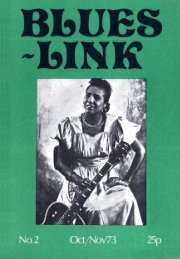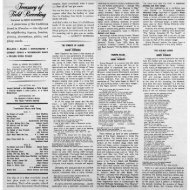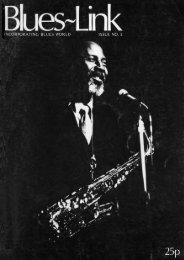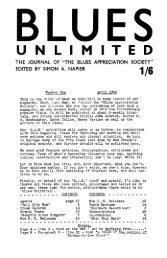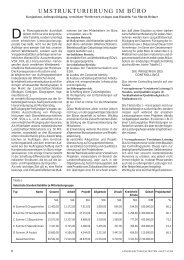The Blues Collection 84: EAST COAST BLUES.- Orbis Publishing ...
The Blues Collection 84: EAST COAST BLUES.- Orbis Publishing ...
The Blues Collection 84: EAST COAST BLUES.- Orbis Publishing ...
You also want an ePaper? Increase the reach of your titles
YUMPU automatically turns print PDFs into web optimized ePapers that Google loves.
<strong>EAST</strong> <strong>COAST</strong> <strong>BLUES</strong><br />
ABOVE: North Carolina bluesman Tarheel Slim (right) with record producer Pete Lowry.<br />
Slim moved to New York in the early 1950s and proved capable of blending his<br />
traditional musical background with the demands of R&B.<br />
commercial. In North Georgia, fiddlers<br />
Eddie Anthony, who worked with Peg<br />
Leg Howell, and Andrew Baxter, who<br />
duetted with his guitarist son Jim, did<br />
make a few records of jagged blues<br />
and hoedown fiddle-tunes. We know<br />
that the Piedmont landscape was dotted<br />
with small groups, including mandolins<br />
and banjos, but few traces of<br />
this stringband activity can be found<br />
in the record archives.<br />
Maybe it all seemed too similar to<br />
the music of the hillbilly stringbands.<br />
In some cases it clearly was much the<br />
sam e kind of m usic. A black group<br />
from Chapel Hill, North Carolina, who<br />
were unable to resist the temptation to<br />
call themselves the Chapel Hillbillies,<br />
played chiefly for white university students.<br />
Guitarist Jam ie Alston was a<br />
member of an otherwise white stringband,<br />
also round Chapel Hill. Orange<br />
County, in which Chapel Hill lies, had a<br />
sm aller black population than many<br />
North Carolina counties, and, as elsewhere<br />
in the south, this encouraged<br />
musical interaction between the races<br />
- or, to put it another way, helped to<br />
relieve the pressure on black musicians<br />
to play only for their own community,<br />
and play only blues.<br />
D ecades later, all this is virtually<br />
unrecoverable history, or exists only<br />
in the fading memories and autumnal<br />
performances of a handful of old musician<br />
s. But th e so u th e a st has been<br />
1006<br />
doubly unlucky. Not only have the rag<br />
songs and banjo tunes gone the way of<br />
the Charleston and the T-Model Ford,<br />
fading into history as they have done<br />
everyw here, but even the reg io n ’s<br />
blues tradition has failed to transform<br />
itself into a viable urban idiom.<br />
S tu n t ed g r o w t h<br />
<strong>The</strong> East Coast touch and easy swing<br />
have never been successfully translated<br />
on to electric guitars, nor reshaped<br />
to create a modern band music on the<br />
C hicago or C alifornia m odel. From<br />
Robert Johnson to Elmore Jam es to<br />
George Thorogood; fromT-Bone Walker<br />
to Gatem outh Brown to Stevie Ray<br />
Vaughan - these are genuine lines of<br />
developm ent. <strong>The</strong> East Coast trail,<br />
winding from Blind Boy Fuller to<br />
Brownie McGhee to John Cephas, has<br />
yet to find a junction where it can turn<br />
into a modern musical superhighway.







